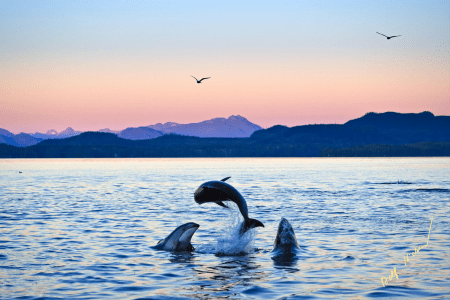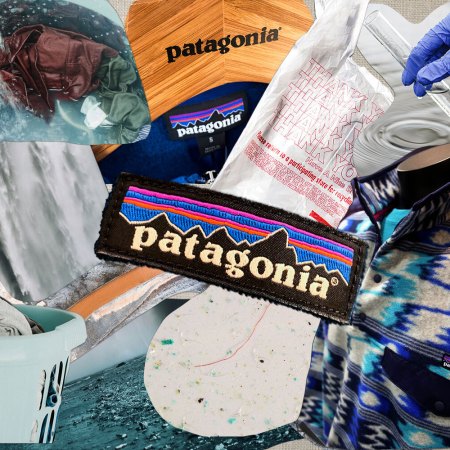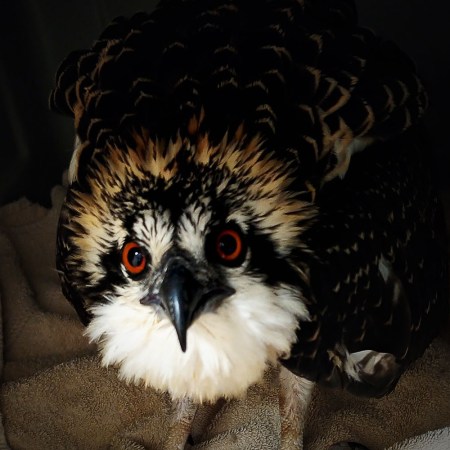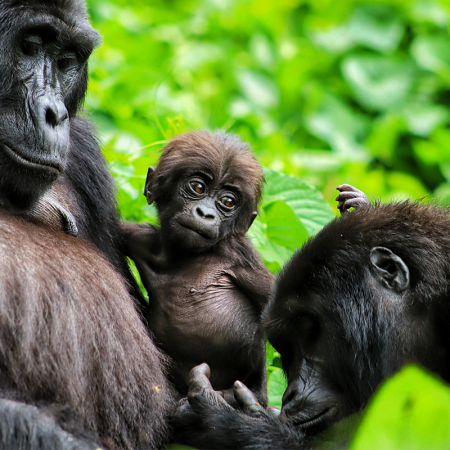It began, the way most black holes do these days, with a social media post. Scrolling through my feed, a vacation photo grabbed my attention. It was one of my friends, smiling and standing in pristine blue water, facing a dolphin. They were holding both of its flippers, almost as if the two were dancing. Swiping through the rest of the images in the slideshow made it clear this was a captive animal in a swim-with-dolphins program.
For days afterward, as I walked my local beach on Hilton Head Island in South Carolina, hoping for glimpses of native wild dolphins, one question kept surfacing: Was that dolphin — with its head raised out of the water, flippers held high, like a pup begging for a treat — happy? Or was it an aquatic jester doomed to perform forever for its next meal?
Bottlenose dolphins, with their smiling visages, are beloved ambassadors of the sea. But according to a recent report from World Animal Protection, at least 2,600 of them are being held captive worldwide; in the United States alone, around 400 dolphins are in captivity, the third-largest such population. They are the stars, some say the victims, of a multibillion-dollar industry, one that is increasingly built upon up-close experiences with marine mammals. The chance to swim and interact with a dolphin has captivated the imagination of tourists, driving demand and prices higher. It’s a lucrative business, but one that is now facing headwinds from dolphin advocates and animal welfare groups trying to end the practice.
Instead of scrolling past my friend’s post and putting the grinning bottlenose behind me, I decided to seek out the answers to my questions surrounding the industry. Little did I know that I was diving headfirst into an issue with all the hallmarks of a classic Greek myth: love, anger, regret and unspeakable tragedy. I found feuding scientists and passionate advocates, trainers, vets and administrators, all with conflicting perspectives that can blur the lines between heroes and villains. As I dove deeper and deeper, one thing became abundantly clear: we’ve created quite a mess in less than a century.
The Blackfish Effect
When you talk to anyone involved in the dolphin tourism industry, both pro- and anti-captivity, they all agree on one thing: the release of two documentaries, The Cove (2009) and Blackfish (2013), led to a seismic shift in public opinion towards cetaceans (an order of marine mammals that includes dolphins, whales and porpoises). The ripple effects of the films are still being felt today. The Cove exposed the annual mass dolphin hunts occurring in Taiji, Japan, and led to increased awareness of the issues facing the treasured mammals. Blackfish told the tragic tale of Tilikum, a captive orca at SeaWorld Orlando that was involved in the deaths of three humans, including two trainers.
The films both captured public attention and provided a platform for anti-captivity activists in their efforts to end the industry. One of the loudest and most active of those voices is Richard “Ric” O’Barry. In the early 1960s, O’Barry made a name for himself as the head trainer for the five dolphins (Susie, Kathy, Patty, Scotty and Squirt) housed at the Miami Seaquarium that were the stars of the television show Flipper. When Kathy died in his arms in 1970, O’Barry thinks she just gave up trying to live; he then founded a nonprofit called the Dolphin Project and dedicated the rest of his life to ending an industry that was once his home.
O’Barry was one of the main protagonists in The Cove, where he helped lead the film crew as they covertly filmed the bloody slaughter and capture of dolphins for sale in Japan. He has generated a fair share of controversy over the years, battling government agencies, theme parks, animal rescue organizations and anyone else he believes is part of the problem. In practice, that has meant cutting open pens, releasing dolphins into the wild, and personally being chased out of countries for questioning their policies.
“There’s a heavy price to pay for the amusement that people get when they buy a ticket and enter one of these venues,” O’Barry tells me. “Most captive dolphins, both wild-caught and bred [in captivity], come from a legacy of brutal captures with numerous deaths. People ask the wrong questions in these places. They want to know the dolphins’ names and what they eat, not how long they have been there, where they came from, and if they will ever be released back into the wild or will live out their lives in captivity.”
“The industry brainwashes visitors,” he says. “It tells them that the animals love [the trainers] and that captive facilities are focused on conservation, education and research. At the same time, they make billions in profits.”

Although cetaceans have been held in captivity since 1860, when P.T. Barnum first displayed two beluga whales that lived only two days before dying, the modern industry we know today began in 1938 when Marine Studios opened its first dolphinarium south of St. Augustine, Florida. The stars from day one were bottlenose dolphins. Known scientifically as a charismatic megafauna — a group of animals that humans feel a particularly strong emotional attachment to, including elephants, giant pandas and penguins — these highly intelligent mammals quickly drew crowds of paying customers.
For several decades, the industry grew slowly. Dolphins, often young females and babies, were captured in the wild and deposited in cement pools. There, they were trained to perform tricks through a variety of methods — most often, they were deprived of food and interaction with other dolphins and confined to cramped tanks until they learned a new routine. This mirrored much of the captive-animal industry at the time, where animals were treated more as assets instead of sentient beings, and untold thousands of animals suffered and perished.
By the 1990s, advances in scientific research and a burgeoning environmental and animal welfare movement saw positive changes sweep across zoos, aquariums and other facilities holding wild animals captive. But cetaceans were tougher to figure out. Evolved to exist in complex social groups and travel across thousands of miles of ocean, many of them, especially wild-caught animals, showed signs of stress in captivity. A number of cetacean experts, including Dr. Denise Herzing, the founder of the Wild Dolphin Project (not to be confused with O’Barry’s Dolphin Project), attribute this to the animals being held in substandard facilities, often in places with minimal government oversight. Cramped and barren tanks, many with filtration issues, are a leading complaint. Plus, the stresses of being on stage, either in shows or in direct interaction with humans, can cause mental fatigue in cetaceans.
“They are captive sentient beings who adapt and cope. But behind the scenes, these animals get medication for stress, anxiety, ulcers, depression, birth control and other issues. The list of their meds is huge. So, it forces you to question if they are happy in captivity in a small tank or lagoon,” says Herzing. “I have studied a specific pod in the wild since 1985, and they have complex social networks, mostly avoiding humans. I can tell you they have never wanted me to ride them or hold their flippers; that’s artificial behavior.”
The 7 Best Places in the World to See Wild Dolphins
Plus, reputable operators that put the welfare of the animal firstThere have been several significant changes that have swept across the industry in the last 15 years. First, most parks with marine mammals have retreated from holding orcas and belugas; Blackfish caused a sea change in public opinion on that front. To fill the gap, a more robust industry built around direct interactions with happy, smiling dolphins has sprung up. The price for a visitor getting to act as a trainer, or to swim or nuzzle with a dolphin, easily fetches a few hundred dollars, making the experience much more lucrative than filling stands with people to watch the animals leap in the air.
Some say this interactive part of the industry is built upon questionable practices. Included in that chorus is Valerie Greene, who was a trainer at SeaWorld Orlando for 11 years. These days, she regularly speaks out against the industry she once loved, including previously leading efforts to save Lolita, an orca also known as Tokitae or Toki who passed away at the Miami Seaquarium in August 2023.
“The industry will say they don’t punish the animals, that they don’t deprive them of their food. Technically, that is correct, but it’s more nuanced than that. They are taught they won’t get fed if they don’t perform upon command,” says Greene. “Cetaceans, especially dolphins, crave mental stimulation, and living in confined spaces, they only get it by interacting with their trainers. We quickly become a lifeboat of sorts that offers them a release.”
“Almost every trainer I met loves these animals and wants what’s best for them, but they are brainwashed into thinking what they do is good,” she adds. “There are certain lies you tell yourself to keep you going and allow you to remain ignorant of what is happening to them. But once your eyes are opened, you can find it hard to live with yourself. For myself, watching what was happening with Lolita/Tokitae at the Miami Seaquarium made me realize the inherent cruelty of the industry.”
[Dolphins] are captive sentient beings who adapt and cope. But behind the scenes, these animals get medication for stress, anxiety, ulcers, depression, birth control and other issues.
– Dr. Denise Herzing, founder of the Wild Dolphin Project
According to World Animal Protection, as of 2018, the last year they conducted a census, there were at least 336 facilities in 54 countries known to keep dolphins. Over 60% of them are in five countries: China (23%), Japan (16%), the U.S. (13%), Mexico (8%) and Russia (5%). In terms of geographical areas, the tourism-heavy region composed of Mexico, the Caribbean, the Bahamas and Bermuda comes in second with 19%, trailing only Asia.
Many of these facilities are designed to cater to booming cruise ship traffic. Chances are good that if there is a popular cruise port, especially in the Caribbean, there is a swim-with-dolphins facility nearby. However, the most troubling aspect to activists is the burgeoning captive-breeding programs that offer a steady supply of new dolphins. Each captive-bred dolphin is a blank slate to be molded into whatever need a facility may have. Without any way to learn the necessary skills to thrive in the wild, these dolphins are destined for a life in captivity.
According to the National Oceanic and Atmospheric Administration, the government agency in charge of monitoring the public display of cetaceans in the U.S., bottlenose dolphins can live at least 40 years. Some females have been observed living well into their 60s. Activists and many scientists argue that breeding an animal with such a long lifespan coupled with a complete inability to survive on their own in the ocean perpetuates a never-ending problem.
“For God’s sake, stop breeding bottlenose dolphins; we don’t need any more. In fact, we need space to rehab injured or sick dolphins that hit the beach,” says Dr. Jenna Wallace, a former Miami Seaquarium and Dolphinaris Arizona veterinarian who became an industry whistle-blower and dolphin advocate. “Also, if these facilities start to close due to a change in public opinion, we need a place to send their animals so they can retire peacefully. That’s hard to do when they keep breeding dolphins nonstop.”

The breeding programs are a feather in the cap for many facilities in the captive-dolphin industry. They say it enables them to perpetuate their stocks without capturing dolphins in the wild, an increasingly limited avenue. While most countries have banned the capture of whales for display — Russia was the latest taking the step in 2023 — the same protections have not always been extended to dolphins. It is still technically legal to capture dolphins with government approval in the United States, though no capture has been approved since 1993.
However, activists say dolphin breeding glosses over the fact that captive dolphins have a high mortality rate due to a wide variety of health issues linked to their environments. According to a 2021 report from the Royal Society for the Prevention of Cruelty to Animals Australia, bacterial infections, respiratory and metabolic diseases, and mental health issues are common problems these animals face. These can be caused by living conditions (poor water quality, sensory-deprived environments), exposure to loud sounds (construction, vehicles, music), city pollution and stress from direct human interactions.
There could be change on the horizon in the U.S. thanks to the SWIMS Act, the first major piece of legislation in Congress in years that aims to force the hand of the industry. First introduced in 2022, the bill seeks to amend the Marine Mammal Protection Act of 1972 and the Animal Welfare Act to prohibit the taking, importation, exportation and breeding of certain cetaceans (orcas, beluga whales, pilot whales and false killer whales) for public display and other purposes. Any animals currently in captivity would still be allowed to be held, but it would effectively provide an end date for larger cetacean captivity. While it does solve the issue of whales (in the sense of the common name; orcas are technically part of the dolphin family), it does not address any issues with captive dolphins. But supporters of the bill are hoping that, if it passes, it could open the door to further legislative changes that would directly benefit dolphins.
Captivity vs. Sanctuary
When Lolita died at the Miami Seaquarium in 2023, it ignited yet another firestorm and further fueled demands for cetacean sanctuaries. The idea of creating places to transition these animals out of captivity may seem like a no-brainer, but like every facet of this issue, nothing is as simple as it looks.
For decades, activists had called for the Seaquarium to be shut down, often citing Lolita’s living conditions. For five decades since her capture at age four, she lived in the smallest orca tank in North America and exhibited numerous signs of distress, including respiratory and jaw issues, as well as bouts of pneumonia. Her tank mate Hugo died in 1980 when he suffered a brain aneurysm after repeatedly slamming his head into the side of the tank. Lolita’s death, after 53 years of captivity at the Seaquarium, added to the tally of at least 120 dolphins and whales who died in the care of the park, according to the Dolphin Project. The most recent death, of the dolphin Sundance, occurred in December 2023.
Opened in 1955, the Miami Seaquarium was one of Florida’s largest aquatic theme parks and held in high regard for decades. But over the years, it lost its luster. According to USDA inspection reports and whistle-blowers, the facility had fallen into disrepair over the last decade; many of its tanks were considered outdated and substandard. When it was sold in 2022 to the Dolphin Company, the largest dolphin park operator in Latin America, local officials supported the move, hoping that conditions would improve. Instead, the decline continued, and by the time Lolita passed, activists were begging the government to step in. Many dolphin advocates cheered on March 7, 2024, when Miami-Dade County sent a notice that the facility’s lease would be terminated — as it’s located on county-owned land — and ordered them to vacate by April 20. Since then, the company has decided to fight the order in court.
The battle around this particular oceanarium highlights a larger issue in the anti-captivity campaign, one that many are trying to solve: what do you do with these animals when their home closes?
The sanctuary movement is gaining momentum, but it also has its fair share of detractors. The idea involves relocating captive cetaceans to enclosed spaces in ocean bays and coves around the world and allowing the animals to live out their lives in peace. Designed to mimic life in the open sea, sanctuaries would be created in remote areas away from most human interaction.
Retired marine mammals could live in significantly larger environments inside these sanctuaries, directly interacting with local marine life while being monitored to ensure their health and mental states are stable. Ideally, some of them would become candidates to be released back into the wild, while the others could enjoy a lower-stress existence and be part of small social groups. These areas could also offer a place to rehabilitate sick and injured animals found in the wild.
The National Aquarium in Baltimore turned heads in the industry when they announced plans in 2016 to create a sanctuary for their six captive dolphins with the goal of expanding it if successful. This was just the latest step president and CEO John Racanelli had taken to better the lives of the dolphins in his facility’s care. A few years earlier, in 2011, he permanently suspended all dolphin shows to improve the health and well-being of the animals.
There is science out there that tells us about the welfare of cetaceans, and it’s not based upon people’s feelings but cold, hard facts. Those facts tell one message loud and clear: These animals don’t belong in captivity performing for people.
– Dr. Lori Marino, founder and president of The Whale Sanctuary Project
However, just like everything else surrounding captive cetaceans, the sanctuary project has faced complications. Warming ocean waters, as well as increased hurricanes and pollution, have reduced the number of suitable locations. Also, unlike the many successful sanctuaries for terrestrial animals that mimic environments we humans understand, figuring out what works under the water is much more difficult.
“You must understand that captive-born dolphins have no skills for living in the wild,” says John Racanelli. “They need to be slowly introduced to open water. Some have never seen rain, wild birds, waves and such before. We can’t just jump in the water and show them how to live independently. Plus, dolphins in captivity are deeply bonded to their humans and rely on them for most everything in their lives.”
“Finding the ideal setting to care for our dolphins for the rest of their natural lives has been a hard task,” he adds. “We recognize that we are blazing a trail that many hopefully will follow, and if we don’t do it correctly, this could cause repercussions that the industry will have to deal with for a long time. If we fail, then many will say that functioning sanctuaries are impossible. I know that we can do it, and they deserve to live better lives.”
The National Aquarium’s sanctuary is slated to open in 2027. If that comes to pass, it would become the world’s second dolphin sanctuary; Ric O’Barry opened a small one in Bali in 2019. Two other high-profile sanctuary projects focused on whales have also garnered attention. The Whale Sanctuary Project (TWSP) aims to create the world’s first orca sanctuary off the coast of Nova Scotia by 2025, and the Beluga Whale Sanctuary in Iceland opened in 2019 with two belugas, Little Grey and Little White.
“There is science out there that tells us about the welfare of cetaceans, and it’s not based upon people’s feelings but cold, hard facts. Those facts tell one message loud and clear: These animals don’t belong in captivity performing for people,” says Dr. Lori Marino, founder and president of TWSP. “The marine parks and their supporters will tell you that they’re doing great, but that’s simply not true. I decided to try and do something about this instead of just complaining about the poor welfare.”

Shiny, Happy Dolphins?
On the other side of this debate are trainers and scientists who worry that, in the rush to tar and feather the captive industry, more harm will be done than good. For decades, the argument has been made that introducing humans to animals in controlled settings fosters a deep connection that leads to awareness and conservation. Plus, many scientific breakthroughs in understanding our animal counterparts have occurred on those in captivity. The Species Survival Commission of the International Union for Conservation of Nature released a position statement in 2023 recognizing the significant contributions made by botanic gardens, zoos and aquariums in species conservation.
Dr. Jason Bruck, associate professor of biology at Stephen F. Austin State University, has authored numerous papers highlighting the quality of care captive dolphins receive these days at accredited facilities and their critical importance to the scientific community. He believes the rush to release dolphins into sanctuaries, while based on good intentions, is a bad idea.
“In our hopes and dreams to give these animals a version of life that we think they should like, we end up regressing on the welfare of the animal,” says Bruck. “You must listen to the animals themselves. The intuitive thought is that they should want their freedom, but what I have found working with them is they want safety and protection.”
“It is easy to look at this like they’re in prison, but that’s not how they function,” he adds. “These facilities are their homes. The captive industry, especially in the Western world, is, for the most part, a serious professional industry. They offer the ability to continue working with wild marine animals on the conservation and health front, which we cannot do in the wild. Most breakthrough research comes from these facilities.”
Dolphin Quest is one such facility Bruck champions. Opened in 1988 on the island of Hawaii by two marine veterinarians, Dr. Rae Stone and Dr. Jay Sweeney, it featured one of the first lagoon enclosure habitats for dolphins, as opposed to the concrete pools that were and still are used around the world. It quickly became a success, with other Dolphin Quest locations opening in Hawaii, French Polynesia and Bermuda. While employing a dedicated team, they have also welcomed other researchers, become a leader in breeding sciences and donated close to $7 million to conservation causes. By all accounts, they are the ideal captive-dolphin facility.
“I think we are responsible for providing them with exemplary care, and our animals are thriving. I think they’re beautifully suited to interactive programs because they find people interesting,” says Stone. “The funding for projects and research work that we’re doing is critical to saving these species, and that’s paid for by people visiting our facilities. It would be heartbreaking if a small vocal minority is able to deny the vast majority who enjoy learning about these animals and become impassioned conservationists because of their experience.”
While Stone’s argument is sound, one thing kept coming back to me after my conversation with her and members of her team. Several times, they compared their captive-bred dolphins to dogs. They emphasized that, like well-loved pets, the dolphins are happy living in their environments, love interacting with their humans and are well cared for. The dolphins view these facilities as home.
It is easy to look at this like they’re in prison, but that’s not how they function. These facilities are their homes.
– Dr. Jason Bruck, associate professor of biology at SFASU
But is that what we want for a species that has survived on its own for millions of years? When I pitched this dolphin-as-dogs argument to Dr. Naomi Rose, a marine mammal scientist at the Animal Welfare Institute, she came back with a laundry list of objections.
“Dolphins in captivity are not domesticated; they are tamed, which is an entirely different thing,” says Rose. “They are still wild animals. There has been no artificial selection for desired traits, something that has happened in dogs for thousands of years. In fact, breeding has been rather random since they just want them to reproduce. They don’t care who breeds with whom as long as they get a baby dolphin at the end of it.”
“Dolphins still need a lot of space to stay healthy,” she adds. “Being provided their food doesn’t obviate the need for wide open spaces. Think about us: we evolved as hunter-gatherers and if we don’t get exercise, we turn into couch-surfing heart attacks waiting to happen. We develop diabetes, heart disease and high blood pressure. We develop health problems. The same is true for captive dolphins.”
“In the end, being confined and getting inadequate exercise kills them, even when there is regular food, veterinary care and no predators.”
It made me think back to the one time I visited a dolphinarium. It was in 2011 when my wife and I were on vacation in Cabo San Lucas. We thought it would be fun; we loved dolphins. But we both left that day feeling like something wasn’t quite right, that those beautiful animals should not have been there. Since then, we’ve rejoiced at seeing wild dolphins swimming in the ocean while boating, paddleboarding or swimming.
But every time we go to the Florida Keys to visit family, we drive past a barrage of billboards advertising fun and instructional dolphin shows. Each prominently features the visage of a supposedly happy, smiling dolphin rearing out of the water. When I think about that drive now, I’m reminded of something Ric O’Barry told me that will haunt me for a long time.
“It’s an entire multibillion-dollar industry built upon a lie: that captive dolphins are happy, that they are smiling and enjoying themselves,” he said. “Let me tell you something: they look like they’re smiling when they’re dead, too.”
According to Rose, the belief that dolphins are smiling at you is the result of evolution, not because they are displaying pleasure. They are blessed, or cursed, with an eternally cheery look that is misinterpreted by humans and misrepresented by captive-dolphin facilities.
“What looks like a smile to us is simply how a dolphin’s mouth is shaped, and this shape remains even in death,” she says. “Unlike many mammals, dolphins actually have fixed expressions — they can’t move most of the features of their face the way, say, primates or dogs can.”
“Using their smile as an indication of how dolphins are feeling is incorrect. You have to dig deeper into their behavior and social interactions to determine if they are thriving or just surviving. I wish more people would do that instead of just buying into the manufactured belief that they are joyous or having fun. We owe that to them.”
Corrections 7/25/24: An earlier version of this story stated that Valerie Greene is an attorney. She graduated from law school but is not currently licensed. This story has been edited to reflect that. 7/26/24: The year of the last legal capture of dolphins in the U.S. was misstated. The last bottlenose dolphin capture was in 1989, but the last dolphin capture (of Pacific white-sided dolphins) was in 1993.
This article was featured in the InsideHook newsletter. Sign up now.
























